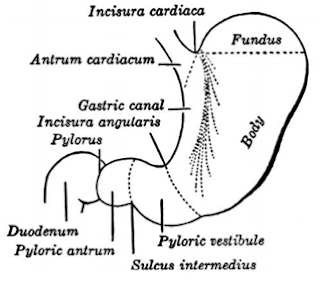Pathophysiology of severe COVID-19
The global pandemic of covid-19 has taken many lives. Although the
mortality rate is around 3-4% many people get admitted to ICU for severe
symptoms. The leading cause of mortality is ARDS- acute respiratory distress syndrome.
It has been found that severe covid-19 develop a phenomenon called
cytokine storm. It is a condition characterized by dysregulated immune response
of human body. The damage in the patient is not due to the virus but because of
excessive and inappropriate response by human immune system. The excess activation
of innate and acquired immune system results in secretion of large amounts of
cytokines, chemokines and complement activation. It has also been found that
there is excess thrombin activation with widespread thrombus formation leading
to DIC.
This phenomenon of cytokine storm has been previously explained in
other immune dysregulated conditions. Influenza infections and EBV infection
are associated with cytokine storm. Familial and secondary Hemophagocytic
lymphohistiocytosis (HLH) has similar excess cytokine release. Macrophage
activation syndrome in Juvenile idiopathic arthritis and malignancy also
exhibit similar phenomenon.
Cytokine release syndrome is a similar condition that occurs after
treatment of certain malignant conditions.
Pathophysiology of cytokine storm in Covid-19.
The cytokine storm in covid-19 results in severe disease and
multisystem inflammatory syndrome in children.
After sars-cov-2 infection in an individual there are 2 phases that
a human body goes through.
Phase 1
In cases of mild to moderate disease - antiviral mechanism of body
is able to suppress the viral replication with development of protective antibody.
In severe cases the antiviral mechanism – the dendritic cells,
macrophage monocyte system is unable to secrete cytokines and chemokines in the
early phases because of which the viral action and replication is not countered.
This enables the virus to directly damage the respiratory epithelium known as
direct cytopathic effect.
However, in Phase 2, in severe cases there is excess secretion of
the proinflammatory mediators and cytokines in other words there is delay
release of these inflammatory cytokines which should have been ideally present during
Phase 1.
The delayed activation of dendritic cells releases large amounts
of IFN-gamma, IFN-β/α which further activates macrophages and neutrophils. The
activated macrophages release IL-1β, IL-6, TNF, chemokines like CCL2, CCl5
etc., These chemokines and cytokines result in further activation of monocyte-macrophage,
neutrophils and complement cascade. These cells accumulate in lungs causing
direct damage to parenchymal cells, pulmonary endothelial cells with resulting
inflammation. All this contribute to pathogenesis of ARDS in lungs. Similar
damage occurs in other organs as well. These chemokines, cytokines also degrade
T-cells thus inhibiting viral clearence.
The cytokine storm is also associated with activation of coagulation
cascade. The activation of thrombin not only promotes clot formation
by activating platelets and by converting fibrinogen to fibrin, it also exerts multiple
cellular effects and can further augment inflammation via proteinase-activated
receptors (PARs), principally PAR-1.
The anticoagulants, such as
antithrombin III, tissue factor pathway inhibitor, and the protein C system keep
thrombin formation in check. During inflammation, all three of these control
mechanisms can be impaired, with reduced anticoagulant concentrations due to
reduced production and increasing consumption. This defective
procoagulant–anticoagulant balance predisposes to the development of micro
thrombosis, disseminated intravascular coagulation, and multiorgan
failure—evidenced in severe COVID-19 pneumonia with raised d-dimer
concentrations being a poor prognostic feature and disseminated intravascular
coagulation common in non-survivors.
Clinical and laboratory characteristics
 |
| Cytokine release syndrome-Shimabukuro-Vornhagen et al. Journal for ImmunoTherapy of Cancer (2018) 6:56 https://doi.org/10.1186/s40425-018-0343-9 |
The laboratory characteristics are as follows
Cytopenia- Lymphopenia is the characteristic of covid-19.
Hypertriglyceridemia
Hyperferritenemia
Elevated liver enzymes
Raised CRP and ESR
Raised IL-6 can be assessed in lab which indicates inflammation
with immune dysregulation.
Since the characteristics of cytokine storm are similar to
secondary HLH, the H-score used in sHLH has been used to diagnose and monitor
the severe covid-19 hypercytokinemia.



Comments
Post a Comment